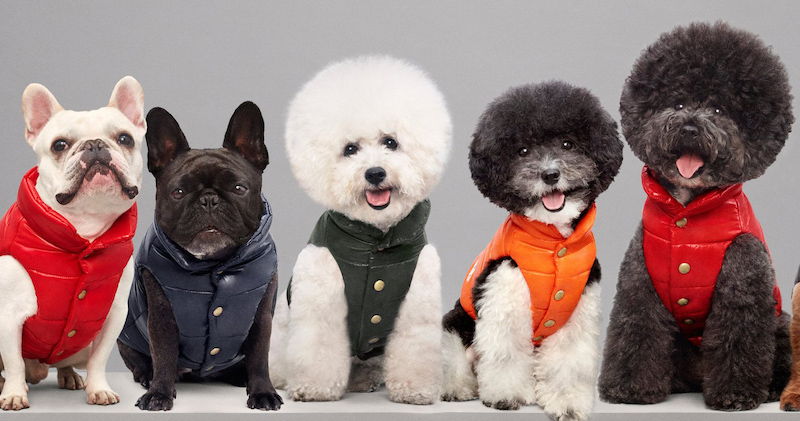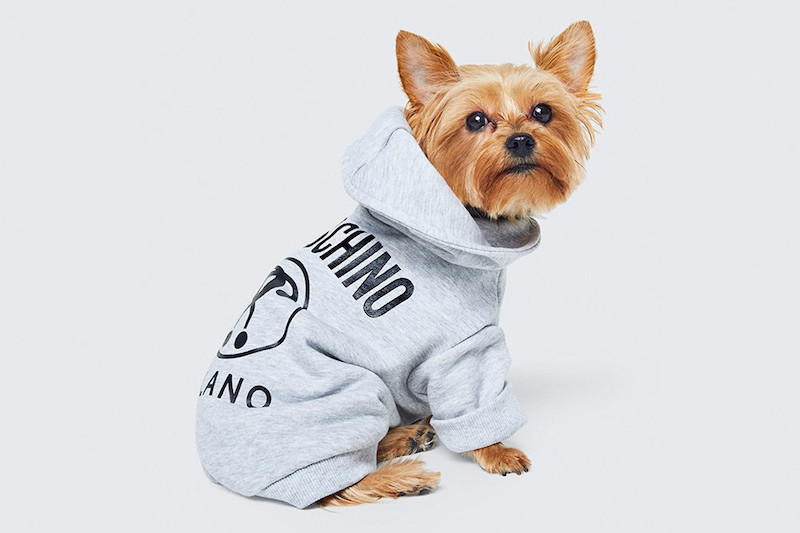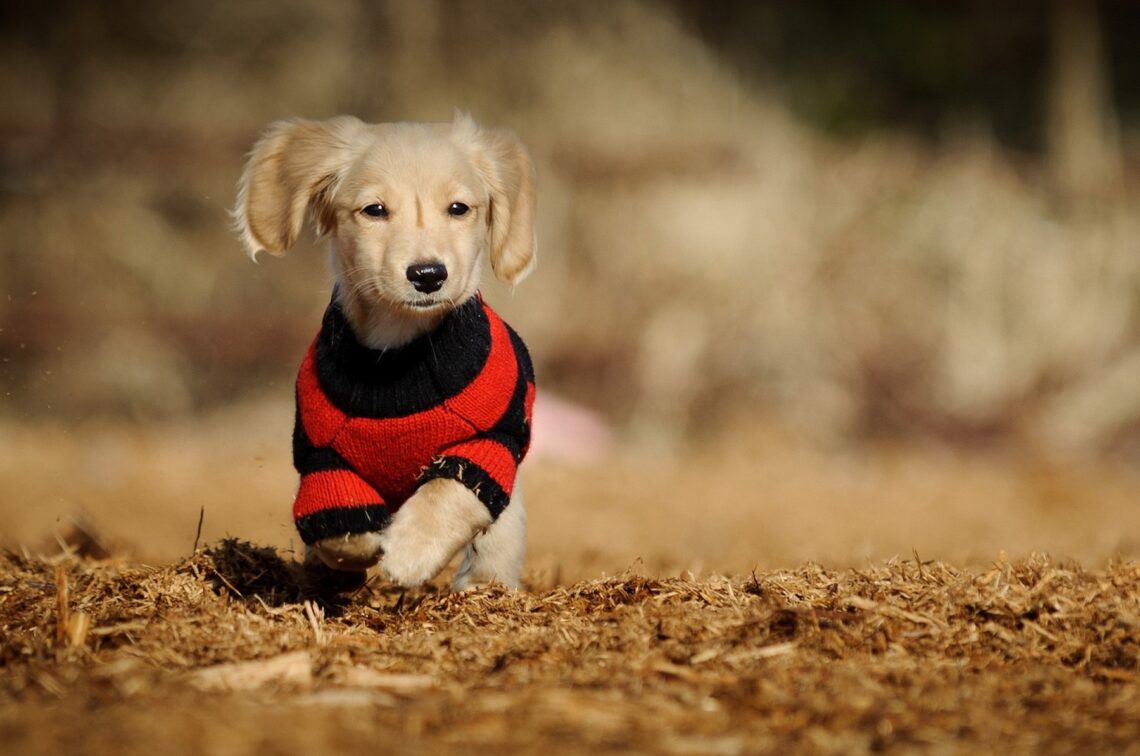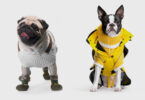Should I make my dog wear clothes? If so, which ones to choose and how to be sure to protect them effectively?
Whether it’s raining, snowing, or shining, some dogs never go out without proper attire. Coats, raincoats, sweatshirts, and even caps … Nothing is too good for our dog friends. Are these accessories really useful? If so, which ones to choose?
Proudly strutting in their winter outfits, some dogs are true fashion prints. But can and should we dress animals as if they were human beings? How to choose clothes that are useful and not just aesthetic?
Are dogs cold outside?
Dogs don’t need caps or windbreakers, although seeing them wearing them is a lot of fun. A domestic animal is not a doll. Protection should therefore be given priority and not the aesthetics of the garment. A soft, light coat will be enough to protect your fragile dog’s back and joints from cold and humidity. He must be able to move freely and not be hampered by a hood or other superfluous accessory.

From the choice of size to the care of dog clothing
From a simple cotton sweater to a real waterproof coat, the real important criterion is size. Oversized dog clothing will hinder your pet on the move and allow air to pass through. Clothes that are too tight can irritate their skin with movement and your dog will feel very uncomfortable. Finally, do not hesitate to wash the garment regularly and treat it against fleas.
On the question of dog clothing, opinions are divided. Between this tendency of some people to project human desires and feelings onto their animals by “disguising” them and the real need to protect them against harsh climatic conditions, we meet all kinds of arguments. It is undeniable that some dogs are more vulnerable than others to cold, heat, and bad weather. For these fragile doggies, extra protection is in order.
Natural protection altered by life alongside humans
As we all know, the dog was the first animal species domesticated by humans. Very early on, in fact, humans grasped the formidable potential of this descendant of the wolf and placed him at his service by assigning him a multitude of roles: hunting, guard, fight against rodents and other pests, trait, rescue, company …
Over generations and ages, this life alongside humans has transformed the dog. This proximity and this forced adaptation to human living conditions have modified a certain number of its physical characteristics. By being kept warm in the winter and out of the heat in the summer, the natural protection enjoyed by the dog has been upset. Gradually, the need to be covered in thick fur has diminished in some breeds, causing them to lose much of it.
At the same time, the successive crosses made by humans in order to obtain breeds with characteristics that correspond to the specific functions expected of dogs, have also contributed to this modification of their natural protection.
In addition, today we no longer hesitate to choose a dog from a distant region, with radically different climatic conditions: we find Chow Chow, Caucasian Shepherds, Siberian Huskies, and Saint Bernards in countries rather warm, as well as Chihuahuas and Greyhounds in cold and rainy places.
These dogs, therefore, do not have the natural protections necessary to adapt to these climates. A problem that worsens with age, which does not match with the lengthening of the life expectancy of our 4-legged friends. For all of these dogs, additional protection, such as clothing, may become necessary.
Get your dog used to
Your dog will have to slowly get used to wearing this little coat or slippers specially designed for him. It is not innate in an animal used to being naked. So you will have to familiarize him with this dress a little every day.
In extreme cold
Although some dogs tolerate the cold well, one should not overlook the detrimental effect that products used on pavements in winter, such as salt and other antifreeze substances, can have on them. They irritate the pads at the same time as the parts of the body closest to the ground: muzzle, feet, stomach, chest, tail… The cold in itself attacks the skin and the hair.
The sensitivity to low temperatures is even greater when the animal spends a lot of time in a heated interior. Chihuahuas, Great Danes, Whippets, among others, are particularly vulnerable to the cold. They do not benefit from the thick coat that Leonberger, Newfoundland, Saint Bernard, wolf dogs (Czechoslovak, Saarloos…) and sled dogs (Siberian Husky, Alaskan Malamute…) have, for n ‘to name a few.
Dogs sensitive to the cold need to wear clothing when the frost hits. It can range from a simple t-shirt to a cotton or wool coat. The paws should also be protected by choosing suitable slippers, although it would be ideal to coat the pads with a protective ointment.

When it rains
Dogs are also not equal when it comes to inclement weather. In general, it is the animals with double coats (topcoat and undercoat), tight and hard which are better off when it rains: Bobtail, Retrievers (Golden, Chesapeake Bay), Griffon Korthals, Berger de Brie, etc.
For their part, the Pitbull, American Staffordshire Terrier, Staffordshire Bull Terrier, and Pinscher experience difficulties when raining. And since there is no question of depriving them of going out, even in particularly rainy weather, a waterproof jacket is always welcome.
In summer
Like cold and rain, heat is also a source of inconvenience and aggression for our canine companions.
In addition to direct exposure to the sun, there is the scorching heat of the paved roads which makes the dog’s pads, stomach, muzzle, and chest ache. Here again, having him wear suitable slippers can help him to endure the walk better, but it is much better to avoid taking his pet out during the hottest hours of the day.
Final words
For certain types of dogs (short-haired, puppy, senior dog), wearing a coat is not recommended. It can be valuable especially in winter when temperatures drop. On the other hand, the tissues of a coat can be harmful to the health of some dogs. They lead to allergies, skin diseases, and overheating.







